- News
- Reviews
- Bikes
- Components
- Bar tape & grips
- Bottom brackets
- Brake & gear cables
- Brake & STI levers
- Brake pads & spares
- Brakes
- Cassettes & freewheels
- Chains
- Chainsets & chainrings
- Derailleurs - front
- Derailleurs - rear
- Forks
- Gear levers & shifters
- Groupsets
- Handlebars & extensions
- Headsets
- Hubs
- Inner tubes
- Pedals
- Quick releases & skewers
- Saddles
- Seatposts
- Stems
- Wheels
- Tyres
- Tubeless valves
- Accessories
- Accessories - misc
- Computer mounts
- Bags
- Bar ends
- Bike bags & cases
- Bottle cages
- Bottles
- Cameras
- Car racks
- Child seats
- Computers
- Glasses
- GPS units
- Helmets
- Lights - front
- Lights - rear
- Lights - sets
- Locks
- Mirrors
- Mudguards
- Racks
- Pumps & CO2 inflators
- Puncture kits
- Reflectives
- Smart watches
- Stands and racks
- Trailers
- Clothing
- Health, fitness and nutrition
- Tools and workshop
- Miscellaneous
- Buyers Guides
- Features
- Forum
- Recommends
- Podcast
review
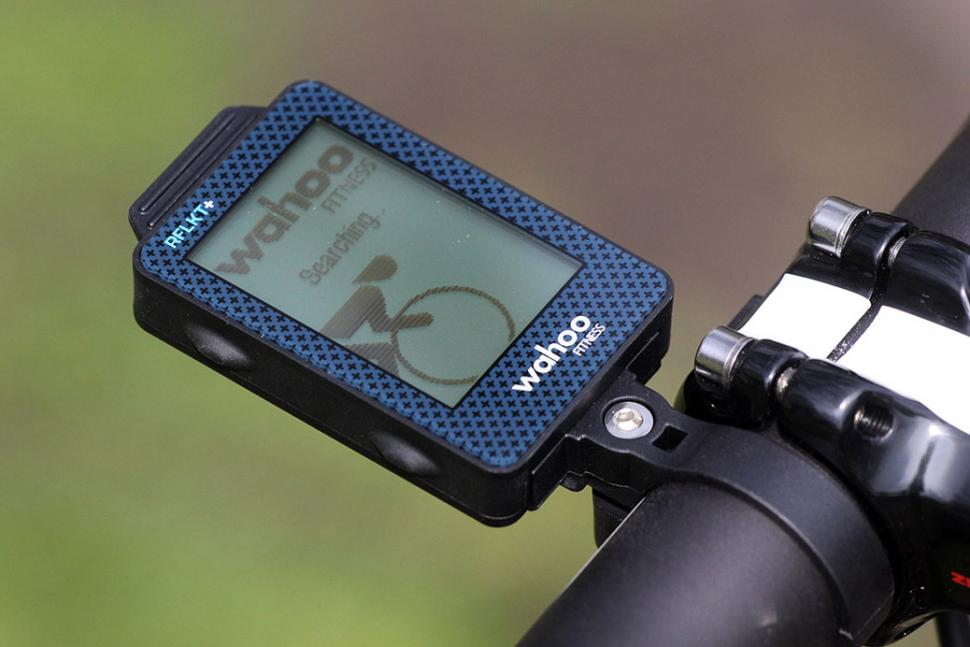 Wahoo RFLKT iPhone Powered Bike Computer
Wahoo RFLKT iPhone Powered Bike Computer£109.99
VERDICT:
Great concept, delivered well; data geeks (with iPhones) will love it
Weight:
52g
Contact:
At road.cc every product is thoroughly tested for as long as it takes to get a proper insight into how well it works. Our reviewers are experienced cyclists that we trust to be objective. While we strive to ensure that opinions expressed are backed up by facts, reviews are by their nature an informed opinion, not a definitive verdict. We don't intentionally try to break anything (except locks) but we do try to look for weak points in any design. The overall score is not just an average of the other scores: it reflects both a product's function and value – with value determined by how a product compares with items of similar spec, quality, and price.
What the road.cc scores meanGood scores are more common than bad, because fortunately good products are more common than bad.
- Exceptional
- Excellent
- Very Good
- Good
- Quite good
- Average
- Not so good
- Poor
- Bad
- Appalling
The Wahoo RFLKT+ is an iPhone powered bike computer. Er, right. What's that mean then?
First off let's be clear about what the RFLKT+ is and isn't. By itself the RFLKT+ isn't really a cycle computer; it has to be used with a smart phone and at the moment it pretty much has to be an iPhone (although Android support is coming). The RFLK+ is a remote display for your iPhone cycling app that also adds hardware features such as a barometric altimeter and compatibility with ANT+ sensors. In my opinion, it's a great idea.
Your smartphone is a very powerful mini computer, so, the logic goes, why buy another one for your bike? There are mounts for you to attach your phone to your bike but there is a big problem in using your phone as a bike computer: battery life. If you were to have your phone screen on all the time while out on a ride you'd flatten your battery in less than two hours at best. You might get away with it on a short ride, but a longer ride will leave you without a bike computer or a phone: not good in an emergency.
The basic idea of the RFLKT+ is that you can leave your phone with the screen off, but still cunningly use it as a bike computer. Your iPhone acts as the processor but the RFLKT+ becomes the display. In that way it tries to give you the best of all worlds. The main features are still available even though your iPhone is stashed safely away and a longer battery life.
The RFLKT+ is pretty small, about the size of a matchbox and weighs in around 35g. Most of the front is screen so it has a good visible area. The RFLKT+ is claimed to be weather proof so no problem if it starts properly raining, assuming your phone is safe in a waterproof pouch.
Fitting the RFLKT+ to the bike is really quick. You're spoilt for choice with mounting options. Included in the box are mounts for out front, on the stem, or an adaptor for your Garmin mount. I went for the "out front" option and the RFLKT+ was fitted in less than two minutes with only one screw to tighten up.
As I said at the beginning, on its own the RFLKT+ is next to useless so the first thing you'll need to do is get it working with an app on your phone. Don't make the mistake I made of trying to find it in the bluetooth setting on your iPhone, it won't work; you need to set it up through a RFLKT+ supported app. I tried it with Strava, the Wahoo Fitness app and Cyclometer. Looking at the Wahoo website there are loads of cycling and running apps which do currently support the RFLKT+ and I suspect that number will grow over time.
If you follow the instructions, pairing your chosen app with the RFLKT+ is pretty straightforward but be prepared to spend 20 minutes or more first time round digging round in the app and configuring it all.
Once it's paired with your iPhone you can now get some use out of the RFLKT+. Through the phone's GPS it will display speed, height, heading and if you have the RFLKT+ it can also use the built in altimeter (on paper, a barometric altimeter should be more accurate than GPS-based altitude readings, but there seems some debate about how much difference this makes in practice). Add a couple of sensors however and it really starts to all make sense. In reviewing the RFLKT+ I also looked at the Bluetooth speed and cadence sensor as well as the Bluetooth heart rate monitor.
You can also add a power meter but you have to really want one as they're not cheap. When weighing up if RFLKT+ is for you you'll need to factor in the cost of the sensors. The heart rate monitor and cadence sensor are £40 to £50 each which is on top of the price of the RFLKT+. If you already have ANT+ sensors you can use those with the RFLKT+ saving you a bit of dosh. If you don't then you might choose the slightly cheaper RFLKT model (rather than the RFLKT+)
This review is really about the RFLKT+ rather than the apps but its very difficult to separate the two. I personally found the Strava app quite restrictive as it won't allow you to customise the display and so won't display heart rate in particular.
As perhaps you might expect, the Wahoo app gives you much more control. The best bit is you can design your own display screens. Not only can you control what is displayed, but how. I found customising your own displays to be easy and really helpful. The best bit is that the functions of the RFLKT+ will only improve & mature over time as more apps support it.
The RFLKT+ is powered by those button sized lithium batteries (CR2032) which are pretty cheap but I haven't had to change the battery since I've had it and apparently it will last up to 12 months. It does have a back light so the more you use that the quicker it will drain the batteries.
The RFLKT+ has 4 buttons on it which turns the thing on, scrolls through screens and also pauses/starts recordings. The buttons can even be used to control the music playing on your iPhone. Like the screens you can configure the buttons to do different things if you want but I found the default settings fine as they were. My only criticism of the RFLKT+ was the buttons: they were a bit stiff and took a bit more effort to work than I would have liked.
In essence the RFLKT+ is really a second, bike friendly, low power display and control for your iPhone. Out on a 4-5 hour ride I found that there was still over 50% battery left on the iPhone. If you already have a good cycle computer the RFLKT+ isn't the right for you but if you don't then it allows you to save much of the cost of a high end one while getting most of the benefit.
I loved the RFLKT+. Its a great concept delivered and manufactured really well. You do need to choose the right app to use it with which might take a bit of experimentation but ultimately the best bit is that its performance is only going to get better over time.
Verdict
Great concept, delivered well as a data geek I loved it.
road.cc test report
Make and model: Wahoo RFLKT+ iPhone Powered Bike Computer
Size tested: n/a
Tell us what the product is for, and who it's aimed at. What do the manufacturers say about it? How does that compare to your own feelings about it?
WAHOO say the "RFLKT turns your iPhone into the most powerful bike computer on the market all in a sleek, coin cell powered package."
I don't know if it turns it into the most powerful bike computer on the market but it does allow you to make use of your iPhone on a bike in a really effective way.
Tell us some more about the technical aspects of the product?
The RFLKT+ is a second display for your iPhone connected via Bluetooth 4.0 so its has a low power drain on your iPhone. The RFLKT has to be used with an app which supports the RFLKT+ display so if you have a favourite app, make sure it's supported before buying it.
You don't have to use it with sensors like heart rate monitors and cadence sensors but they do add to the experience. If you want they can be added over time.
Rate the product for quality of construction:
8/10
The RFLKT is very light and can feel a bit plasticky but didn't come across as flimsy. Apparently it's water resistant and having been through some showers with it on I have no reason to doubt that.
Rate the product for performance:
9/10
Once you understand how to set it up, out on the road it worked really solidly.
Rate the product for durability:
9/10
Batteries lasted well, a light product but not one that I'd want to drop or run over too much.
Rate the product for weight, if applicable:
10/10
Yep its very light (35g).
Not the cheapest bike computer on the market but cost effective considering what it can deliver. Its a product that will continue to get better as app support grows.
Tell us how the product performed overall when used for its designed purpose
Once set up the RFLKT worked fine, it was easy to fit and was reliable when out on a ride.
Occasionally I found the initial pairing a bit temperamental but I think once you've settled on an app to use it with that wouldn't be a problem.
Tell us what you particularly liked about the product
I loved the fact that you can design your own display screens for the app, if you wan't to concentrate on heart rate based training then design a screen for that, if you're working on climbing then focus on your height gain and speed.
The app plays a large part when judging the functionality of the RFLKT but choose the right app and its great.
Tell us what you particularly disliked about the product
Initial pairing with the phone can be a bit fiddly and the buttons could have had a better "feel".
Did you enjoy using the product? Loved it.
Would you consider buying the product? Definitely.
Would you recommend the product to a friend? If they didn't already have a decent computer and they had an iPhone then unequivocally yes.
Anything further to say about the product in conclusion?
I'm really looking forward to see how support for the RFLKT grows over time.
It would be good to see routing and directions added and better support from other apps.
It's good to see the developers continuing to release updates as clearly there is ongoing support for it.
About the tester
Age: 39 Height: 6 foot Weight: 85 Kg
I usually ride: Orbea Aqua My best bike is:
I've been riding for: Under 5 years I ride: A few times a week I would class myself as: Experienced
I regularly do the following types of riding: commuting, sportives, general fitness riding, Not really
Latest Comments
- mdavidford 1 min 42 sec ago
Shops are so last century - the future is all about analysing your brainwaves and just sending you what you want before you ever know you wanted it.
- Steve K 3 min 33 sec ago
Two thoughts on this. I would have thought having his passenger lean across him would be even more dangerous than him filming it himself. And, as...
- BikingBud 20 min 44 sec ago
But could you retro fit an 8 track player?
- Surreyrider 25 min 42 sec ago
Good try. Won't work.
- Surreyrider 28 min 10 sec ago
More than six times over the legal limit? She's the winner here. Her punishment is insufficient.
- Smoggysteve 41 min 58 sec ago
Sram only have a foot in the market with regards to road bike abd mountain bike (and loose variations of) The rest of the bicycles sold around the...
- wtjs 1 hour 57 min ago
so my hands are near the brake levers...
- PRSboy 3 hours 36 min ago
I came here on a small boat from the Road Cycling UK forum after that croaked a few yrs ago.
- A V Lowe 4 hours 16 min ago
The huge problem is the misues of the term pavement - I've cycled & driven cars on pavements for the past 61 years - their legal status is ...
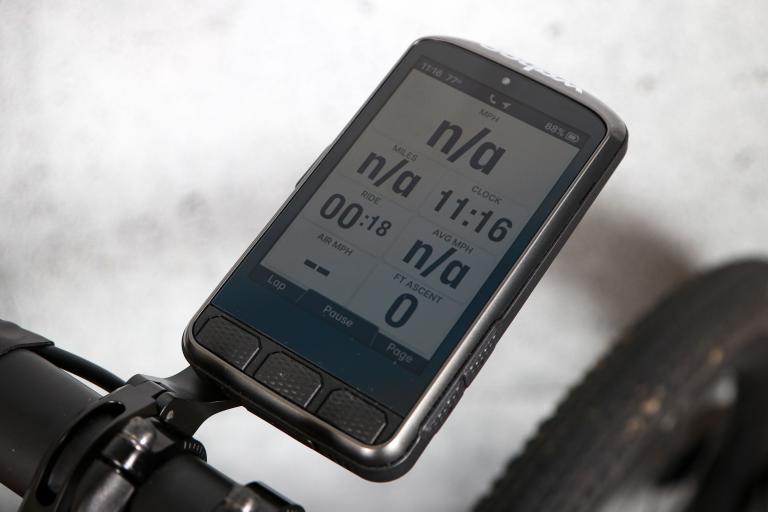
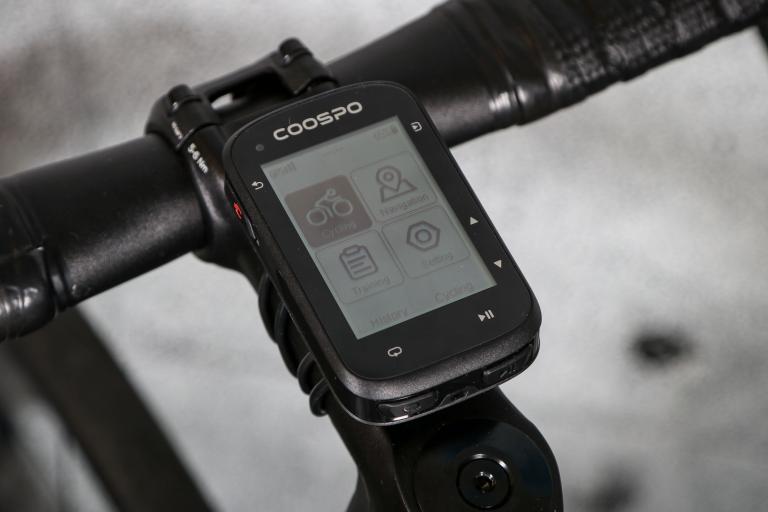
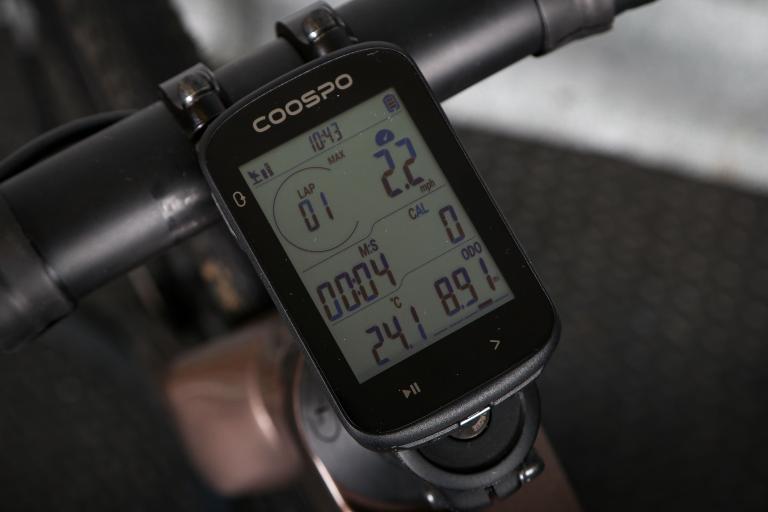
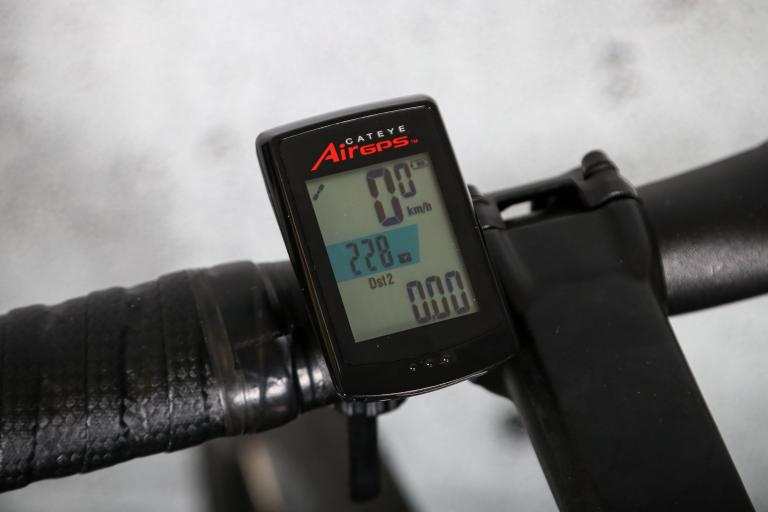
Add new comment
21 comments
I'm looking at one of these as can't face shelling out the whole cost of a Garmin.
Any more advice?
Thoughts on compatible cadence/HR sensors?
i find there is quite a lag on the sensor information appearing on the screen. Particularly noticeable with cadence and gradient, where you can be over the crest and the device still tells you are battling your way up the hill.
Is this an inevitable problem? Is there any way round it? (And is a Garmin any different?)
Wahoo are promoting turn by turn (via Ridewithgps) on their website (favourite app)
I have an iPhone 6 which I think already includes a barometric sensor. Also have no need for Ant+ as happy with BTLE. Is there any reason to get a + over the standard RFLkT in my case? The base model is £50 at Wiggle.
I used my rflkt+ for about a month before I gave up and got a garmin 500. It has a light that works (that will stay on for several hours if needed) and never randomly crashes mid ride.
My RFLKT+ has very variable battery life, from a few months to a single 1 hour commute, seems to be interference related (on the 1 hour commute my light next to the RFLKT+ had a bad connection, though the display was still working fine).
There is apparently turn by turn navigation coming, there was an fb post about it recently, I think it was from ridewithgps so probably an in-app purchase or something.
I do absolutely love my RFLKT+ (temp and baramoter is very useful), but I wish they'd sort the battery and make a few software tweaks (mph and celsius can't be displayed together, only KM/c or mph/f).
has anyone seen anything further about turn by turn compatibility for the RFLKT+?
It depends on the phone regarding battery life.
I have my phone screen on full brightness, GPS on, Bluetooth connected to a HRM (not Bluetooth LE), ANT+ on and connected to Wahoo speed/cadence sensor and after a 6 hour ride I have 30% battery left.
This is a Samsung Note 4.
Have you upgraded the firmware? IF you have, that could be the CAUSE of the problem.
I have found Wahoo very hard to deal with. My RFLKT worked perfectly until the app told me to update the firmware. Now it has connection issues, as well as getting a Low Voltage Warning (which you must reset to get rid of).
If you review the posts on their facebook page from users, many are having the same connection and voltage warning issues after upgrading the firmware.
If you have a RFLKT or RFLKT+ and it is working fine, DO NOT UPGRADE THE FIRMWARE!
As is customary for their customer service, most of these posts are ignored.
Secondly, by way of update, these aren't exclusively for iPhone anymore. I was using the RFLKT on Android (must be 4.3 or above and have BLE in the phone).
Have had the RFLKT+ for almost a fortnight now. On every ride so far it's dropped out. Finding it completely useless.
Do the ANT+ sensors simply connect to the Wahoo unit then? Can you to store distance (i.e. Trip) if you don't have the phone connected (e.g. if you ran out of battery on the phone)?
How does using blutooth for the connection affect battery life on a typical phone?
It doesn't work without the phone. The ANT devices connect to the RFLKT+ and the values are relayed to the phone via Bluetooth. No data is stored on the RFLKT so if you phone goes flat it's game over, but my iPhone quite easily out lasts me. I get between 8 and 9 hours with display and wifi turned off.
They seem quite happy to knock out Safari and iTunes for Windows.
Never had any dropouts either. Also, there is an Android beta that includes RFLKT support if you email them. Works well with my Nexus 4/5.
Not sure if this is the right place but I have one of these for sale. Ended up with 2 due to some app dev i've been working on. There is a classified ad waiting approval but PM if interested.
So no problems with persistent ANT+ / Bluetooth connection dropouts as experienced by multiple users on the DC Rainmaker site?
Never had a drop out on mine. There are signal strength indicators on the iPhone screen (for the ANT sensors measured by the RFLKT+). I have the speed and cadence sensor on the rear left chain stay and the signal strength shows about 75%. The Bluetooth seems to have a useful range (from the RFLKT to the iPhone) of about 15 to 20 feet so you can hop off the bike for a nature break or whatever and not worry about dropping the connection.
If the screen could light up and show navigational cues from a GPX file that your phone app (e.g. OsmAnd) was following, now that really would be clever.
If it did this, I'd definitely get one. I'm always getting lost even on roads I ride all the time. Would be great for touring or riding on holidays.
I have one and love it. I previously had the RFLKT but upgraded to the plus to get the ANT support. I use it on three bikes, my road bike is fitted with a Bluetooth speed and cadence sensor and I also use a Bluetooth heart monitor. On my commute bike I have ANT speed and cadence sensor. I sometimes wear an ANT heart rate monitor. On my turbo bike I also have ANT speed and cadence and the ANT heart monitor. The reason I have the Bluetooth heart monitor is because before the RFLKT+ it was not possible to mix Bluetooth and ANT and didn't want to mess with an ANT dongle on my iPhone.
I use the Wahoo app out of preference as it is very customisable and also has single touch upload to Strava and Training peaks plus a load of other services. If you use one of the dedicated apps like Strava it is difficult to get a full set of data into another service.
To give you some idea of the customisation possible I have my commute activity set up so that I can also control music playback, which plays through my Bluetooth bone conduction headphones. When the track changes the RFLKT display momentarily changes to show the song information then switches back to my ride data. I have one of the buttons configured to move to the next song as well.
It's a great device. I have K-Edge mounts on each bike and just use the Garmin twist mount back on the RFLKT+. Its as simple as starting the app, pressing a button on the RFLKT and selecting the activity. With the display and wifi off on the iPhone I get around 9 hours of ride time.
One final point, it doesn't use 2032 it uses a 2450 which is unfortunate as all the sensors seem to use 2032.
Question of the day: Will Wahoo have Android software available before the heat death of the Universe? Or even before Android starts moving into smaller form-factors and we get more MotoACTV like devices that might make RFLKT+ irrelevant?
Until relatively recently BT4.0 support on Android was dire, especially when the RFLKT first launched a few years ago, but yeah, it would be nice to see them catch up there.
Doesn't Apple have a stake in Wahoo? I was under the impression it did have some sort of vested interest in the company. I heard that Apple was actively buying fitness / running / cycling apps and hardware companies so that the tech could be used exclusively in their IOS platforms, and that Wahoo was one of them. If that is the case I would say the answer to our question is never.